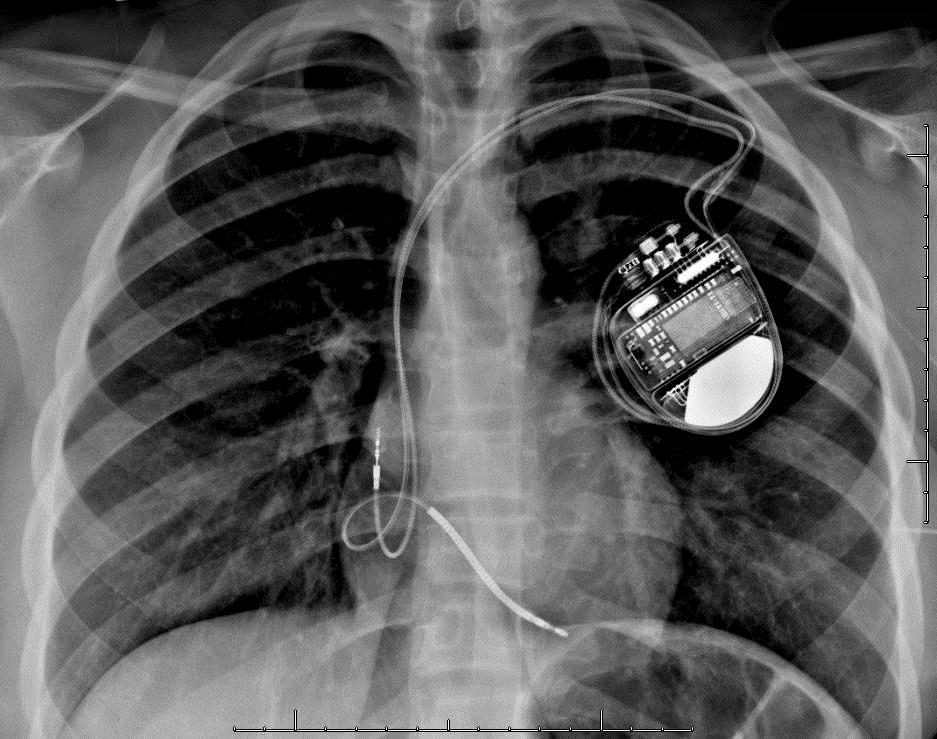Pacemaker/Defibrillator Implantation
Pacemakers and Defibrillators (ICDs) are usually implanted by a special kind of cardiologist called an Electrophysiologist for school-aged children and adolescents. This is a small surgical procedure where an incision is made near the collarbone, and a wire (called a “lead” or “electrode”) is floated down into the heart via the vein coming back from the arm. Then a small metal box (called a “generator”) containing a battery and a computer is attached to the lead and placed under the skin. For defibrillator insertion, usually the device is tested by provoking a dangerous heart rhythm and making sure the computer can recognize and fix the problem. After device implantation, patients usually spend 1 or 2 nights in the hospital.
Click image to enlarge.
In small children, or patients with complex heart problems, the leads may need to be attached onto the outside of the heart. In this case the procedure is done by the pediatric cardiac surgeons.
Afterwards, patients are seen periodically in the pacemaker/defibrillator clinic.
